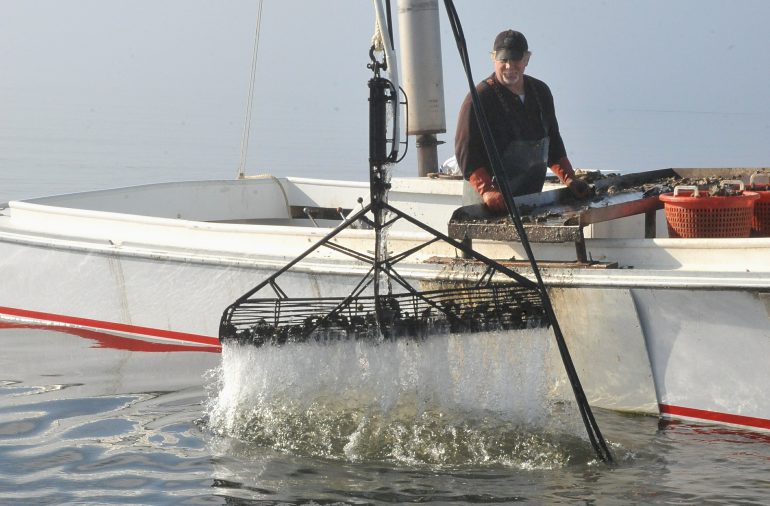ANNAPOLIS, Maryland – The House of Delegates voted 102-39 on Thursday in favor of a bill that would keep intact existing oyster sanctuaries on the Chesapeake Bay, a blow to the commercial fishing industry’s efforts to expand the state’s oyster fisheries.
Supporters and opponents of the bill, named the Oyster Management Plan, are both saying that their solution is best for the long-term health of the bay and its oyster population, which helps clean the Chesapeake by filtering nutrients like excess algae out of the water column.
“(The Oyster Management Plan) protects the fragile progress that has been made to date in recovering oyster populations,” the Chesapeake Bay Foundation said in written testimony to the House Environment and Transportation Committee on Feb. 24. “This bill would in no way impact (the Department of Natural Resource’s) ability to manage the public oyster fishery, including the development of rotational harvest management for public oyster bottom.”
Bill opponents, such as the Clean Chesapeake Coalition, disagreed, saying that harvesting in the sanctuaries is vital to maintaining existing oyster stock in “idle” areas.
“There’s this idea that the sanctuaries would be generating all this oyster larvae,” coalition spokesman Chip MacLeod said to the committee on Feb. 24. “That larvae does no good unless it has a clean, hard bottom to strike. One of the things that doesn’t work with the oyster sanctuary theory is that we don’t have clean, hard bottom (around these sanctuaries).”
Opening parts of the sanctuaries to commercial use, MacLeod said, would remove aging oysters whose environmental usefulness had subsided, and free up space for oyster larvae to flourish.
The Department of Natural Resources, the agency that controls the sanctuaries, opposes the bill.
Opponents point to a 2010-2015 study conducted by the Oyster Advisory Commission, a Natural Resources department subsidiary, that concluded that there is “justification” to adjust current sanctuary boundaries.
“There are sanctuaries that are known to have poor habitat and/or very low densities of oysters,” the advisory commission’s study report said. “If the ultimate goal is to have more oysters in the water, then some areas that are currently sanctuaries could contribute to this goal and provide economic and cultural benefits to fishing communities.”
Conversely, a bill enacted in 2016, the Sustainable Oyster Population and Fishery Act, mandates that the Department of Natural Resources, in conjunction with the University of Maryland Center for Environmental Science, conduct a study to adopt a science-based fishery management plan by 2018. Supporters want to see this study concluded before allowing the department to entertain any ideas of opening sanctuaries to harvest.
Opponents contend that doing so undermines the efforts of the department and its advisory commission.
“The (Oyster Advisory Commission) is doing all of this good work, because the prior administration wouldn’t adopt a management plan,” Delmarva Fisheries Association chairman and waterman Rob Newberry told the University of Maryland’s Capital News Service.
Newberry told the Environment and Transportation Committee that the bill would “kill” the management plan adopted by the commission.
Supporters of the bill contend that oyster populations have not recovered enough to sustain themselves without protection.
Citing a self-commissioned poll that found 88 percent of Marylanders support sanctuaries and a 2016 Department of Natural Resources report that found oysters are thriving inside designated sanctuaries but not outside them, the bay foundation said in a press release, “Sanctuaries are Maryland’s insurance policy for the future oyster population. By protecting a small portion of the state’s oyster bottom from harvesting, oysters on the sanctuaries can grow and reproduce.”
The bill was voted on favorably with a couple amendments by the House Environment and Transportation Committee on Tuesday before it moved to the House floor. The amendments would prevent anyone from using the bill to block any sanctuary projects.
The bill is expected to be heard by the Senate in the coming weeks.

